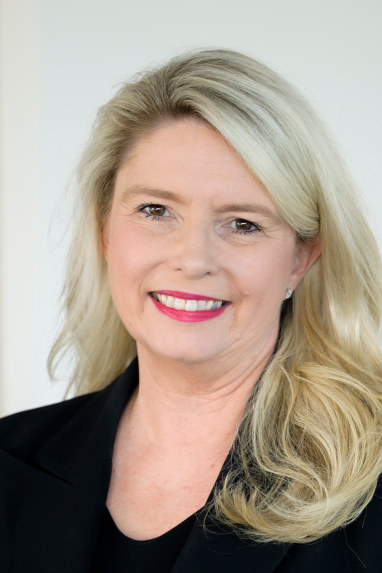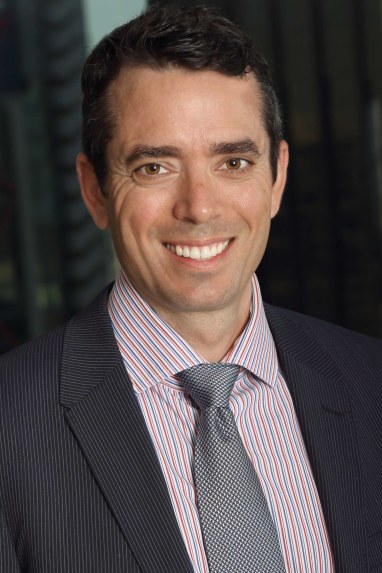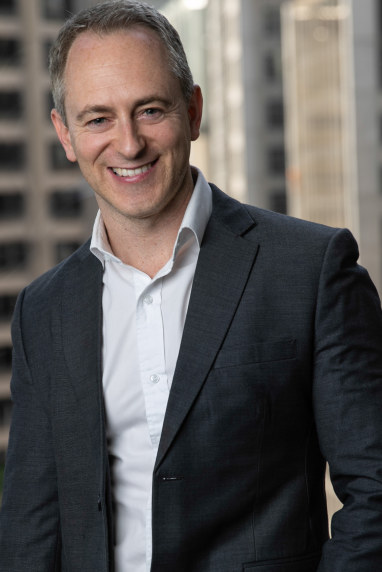Dented home ownership dreams drive Millennials to ETFs

Olivia Schweikert is one of a growing number of Millennials choosing ETFs for wealth creation over property, which is increasingly out of reach for young city-dwellers.
In April, Olivia Schweikert bit the bullet and put $5000 into a BetaShares exchange-traded fund tracking the performance of over 8000 companies across 60 global exchanges.
A week later, the 28-year-old marketing and events professional tipped another $20,000 into an additional three ETFs giving her exposure to US technology stocks, and companies leading the way on sustainability.

Millennials have different investment goals, says Meaghan Victor from State Street Global Advisors SPDR.
“All my friends were talking about ETFs, it just kept coming up.
“I’ve always been interested in investing but found it overwhelming knowing which stocks to choose and understanding the market,” Schweikert said.
She doesn’t plan on touching her ETF for five to 10 years, it’s a bottom-drawer investment, but she doesn’t mind boasting that she’s made just over $1000 on her ETF investments to date and has every intention of expanding her portfolio into more ETF products in the future.
“I could pull it out and I’ve made a $1000 in three months for literally doing nothing. I’m stoked on that,” Schweikert said.
Schweikert is one of a growing number of Millennials, particularly women, selecting ETFs as a diversified wealth creation vehicle over property, which is increasingly seen as out of reach for young city-dwellers.
“Millennials’ saving goals are very different [from Boomers and Gen X] because home-ownership feels unattainable,” Meaghan Victor from State Street Global Advisors SPDR says.
Once the domain of highly involved self-managed super fund operators, the so-called passive ETFs are attracting a massive influx of fresh money from investors like Schweikert and her peers.
ETFs are a basket of securities that follow an index, such as the ASX200, NASDAQ 100 or S&P500.
Domestically the industry now stands at over $115 billion in total, clocking growth of 32 per cent a year. It is expected to double within three years if its current growth rate continues.

ETFs have had an astounding growth, says Matthew Wilkinson of Morningstar.
“It’s certainly been astounding growth and it’s largely due to the quality of ETF products that have come to market,” Morningstar senior analyst Matthew Wilkinson said.
The diversity of their construct means ETFs are deemed lower risk and less hands-on compared to stock picking.
“I’m not a very risky investor,” says Schweikert, who has explored crypto and initial public offerings and dismissed them as too volatile.
“’I’m not a professional stock picker and a lot of professional investment managers don’t beat the market so who am I to make a guess on whether a stock is going to be profitable or not. An ETF is so much safer. I don’t have to check it every day, it’s set and forget,” she says.
Diversification remains the biggest drawcard for using ETFs, followed by access to overseas markets, and avoiding individual stock risk, according to BetaShares analysis.
But other factors have made this product structure attractive to Millennials as they come of age and allocate discretionary funds to investing, as well as fund managers looking to exploit the flexibility of the product structure.
Technology platforms such as CommSec’s Pocket product, Raiz and Six Park’s Robo-Advisor have democratised access to ETFs.
“It is fair to say that portfolio construction tools that were in the past the exclusive domain of large institutional investors, are now easily available to the retail investor,” Vanguard’s Robin Bowerman said.
Fees on passive index-tracking ETFs are low, typically between seven and 60 basis points, because there is very little or no interference from an investment expert curating the fund, and the amount required to buy in is also low compared to managed funds.
“Millennials have a huge scale of savings and income and ETFs are something that across the board everybody can access — you can get your foot on the wheel with $500, it’s not out of reach,” says Schweikert.

Australian investors are pouring money into ETFs, says Ilan Israelstam of BetaShares.
ETFs also trade on an exchange, making them easy to buy and sell, regardless of whether they contain stocks, commodities, or bonds, and investors can cash out at any time with a level of price transparency not available in a managed fund.
The flexibility of this product structure has garnered the attention of innovative fund managers, such as Magellan, who pioneered so-called “active” ETFs in 2015 and last year converted a sizable chunk of its unlisted funds to ETFs. This conversion from unlisted funds boosted overall funds under management in Australian ETFs by some $16 billion.
“We’ve recently seen the AuM (assets under management) in the Australian ETF industry grow exponentially due to three forces — strong continued net flows by Australian investors who are investing in ETFs at record rates, growth in the underlying value of the securities that ETFs are investing into, and several “conversions” by active fund managers of large unlisted funds into what are known as “open class” structures which bring the unlisted fund AuM onto the exchange”, BetaShares head of strategy Ilan Israelstam says.
Some feel the perceived performance and security of ETFs will be tested in a bear market. “The popularity of ETFs has grown off the back of a very strong period in markets, and passive funds generally do well in bull markets,” a spokeswoman for Platinum Investment Management says.
“The longer we continue without a prolonged bear market, the more people believe they can invest without necessarily a true appreciation of risk,” she says.
However, Victor believes that, based on current momentum, by the time ETFs celebrate their 20th anniversary on the Australian Stock Exchange at the end of August, they will potentially have reached a tipping point as one of the most disruptive forces in how Australians build wealth.
BetaShares’ research indicates that 2021 has the potential to attract the biggest cohort of first-time ETF investors on record — an estimated 190,000.
And if recent history is anything to go by, Millennials and Gen Z will make up the lion’s share of newcomers.
“If the proportion of new ETF investors represented by Millennials and Gen Z remains consistent with the pattern observed since the start of the pandemic in 2020, more than 120,000 of these first time ETF investors will be under the age of 40,” Israelstam says.
Ethical investing has already emerged as a strand-out feature of this age group.
“The majority of investors now say environmental, social, and corporate governance (ESG) influence their investment decisions but Millennial investors have a higher allocation to ESG investments than other generations,” Victor says.
State Street Global Advisors’ recent wealth management research shows that 90 per cent of Millennials want to tailor their investments to their values.
Schweikert is one of them. Sixty per cent of her portfolio is tied up in ESG ETFs such as ETHI and FAIR, and she intends to invest her tax refund in a third diversified ethical ETF.
“I wanted to be an ethical investor, that is important to me,” she says.
Victor says ESG investing is also forming a bridge between Baby Boomers and their children.
“As Boomers pass their wealth on to their children, more conversations are taking place about aligning values with investments. On the one hand, parents are trying to hold on to their youthful dreams of making the world a better place, and on the other, their kids are dedicated to ensuring that their actions, including their investments, are aligned with their values,” Victor says.
This enormous transfer in wealth between generations, combined with important conversations about aligning families’ personal values with their investments is expected to fuel strong growth in ESG investing over the next decade.
Victor points to State Street SPDR ETFs’ sustainable E200 fund launched in August 2020 as a case in point. Within months it had attracted inflows of more than $10 million and now has $26.7 million under management.
Subscribe to gift this article
Gift 5 articles to anyone you choose each month when you subscribe.
Subscribe nowAlready a subscriber?
Introducing your Newsfeed
Follow the topics, people and companies that matter to you.
Find out moreRead More
Latest In Financial services
Fetching latest articles